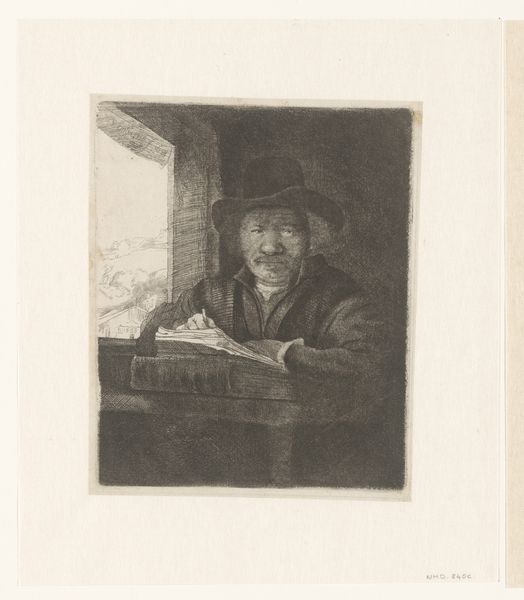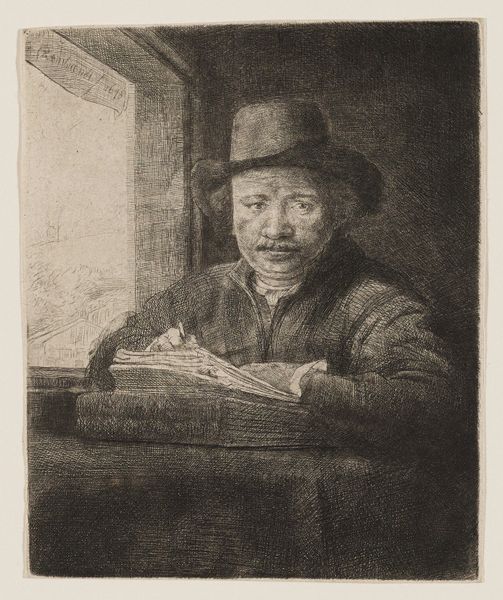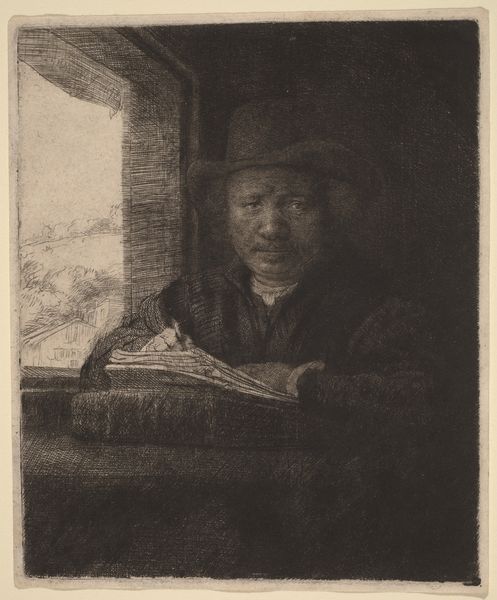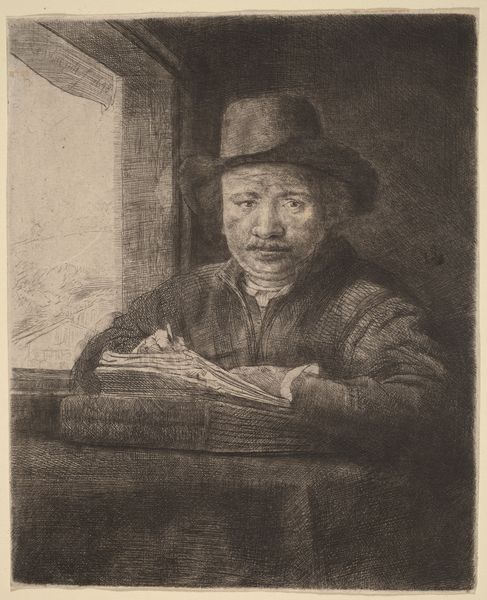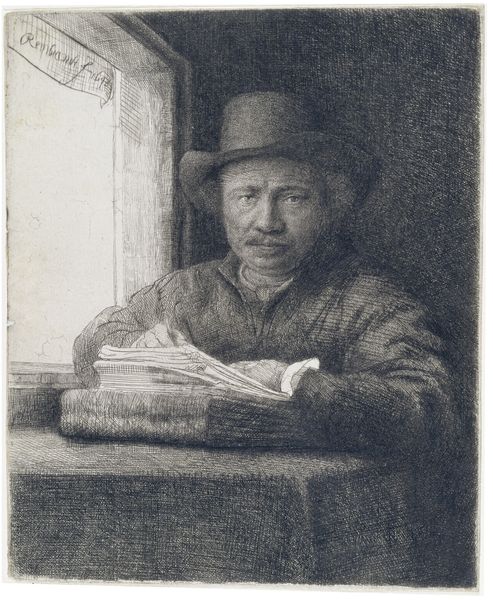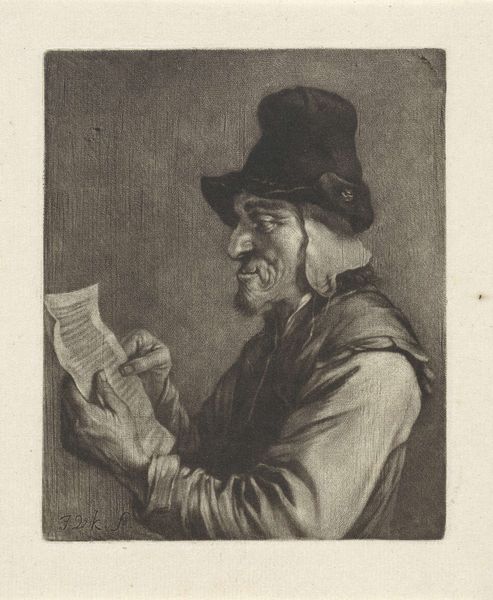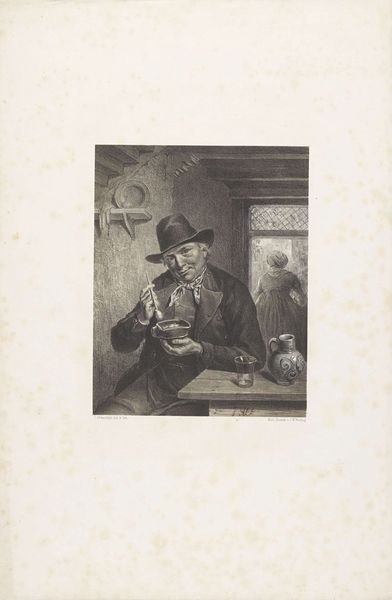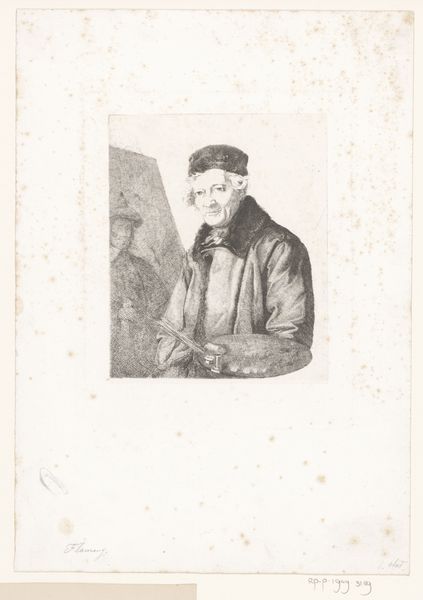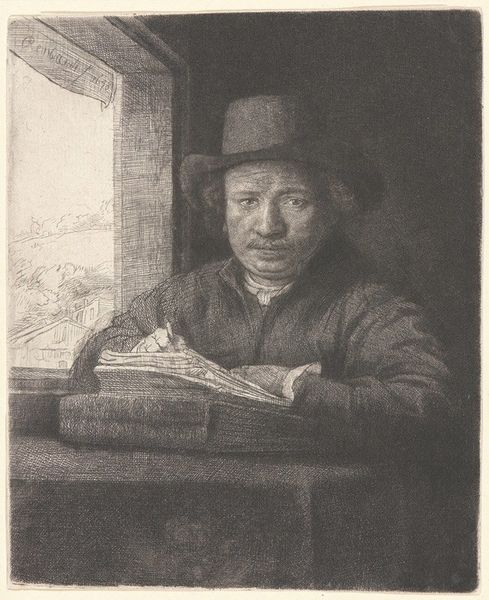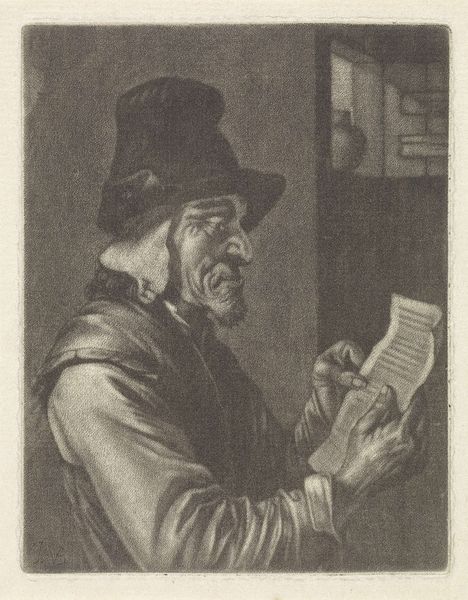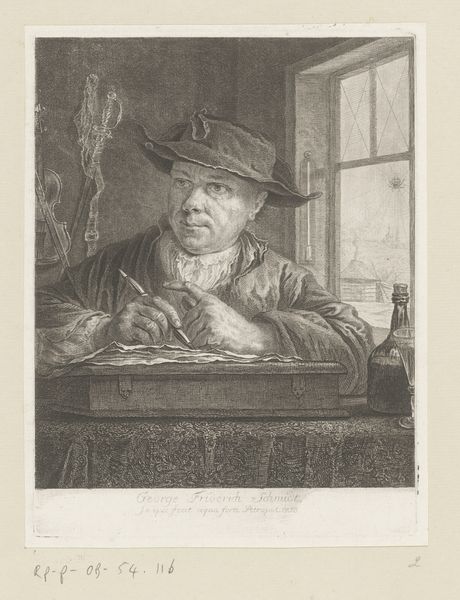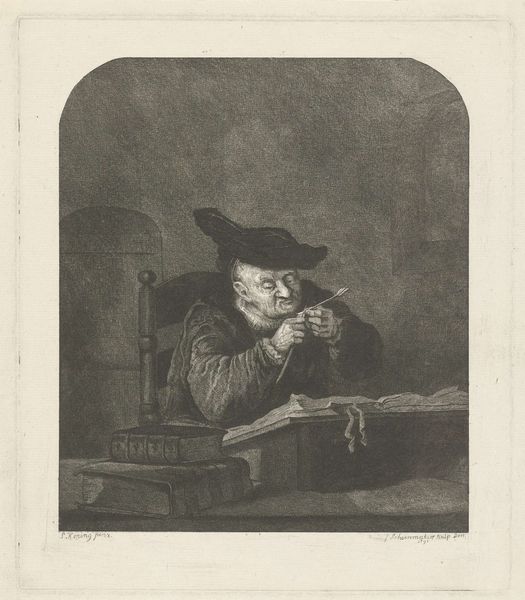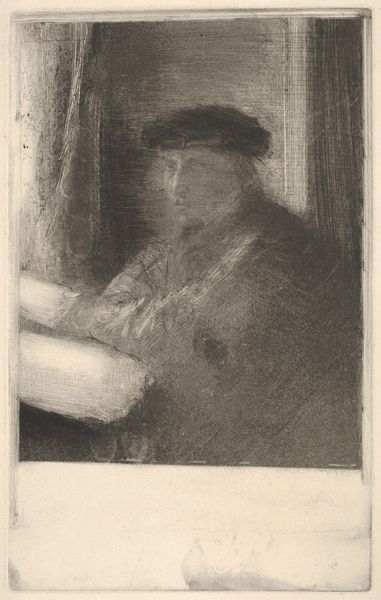
drawing, print, etching, ink
#
portrait
#
pencil drawn
#
drawing
#
self-portrait
#
baroque
#
dutch-golden-age
# print
#
etching
#
pencil sketch
#
charcoal drawing
#
ink
#
pencil drawing
Dimensions: height 160 mm, width 130 mm
Copyright: Rijks Museum: Open Domain
Curator: Before us we have Rembrandt van Rijn’s "Self-Portrait Drawing at a Window." The etching, rendered in ink, is thought to have been produced sometime between 1648 and 1808 and currently resides in the collection of the Rijksmuseum. What’s your initial response? Editor: It strikes me as intimate, almost melancholic. The close framing, the dark shadows—they seem to emphasize the solitary nature of the artistic process, or at least, Rembrandt's portrayal of it. Curator: Absolutely. The formal arrangement draws us in. Notice how Rembrandt uses hatching and cross-hatching to build up tonal depth, particularly around his face and clothing. It creates a sense of volume, almost as if he’s emerging from the darkness. The window serves as a compositional device. The outside scene beyond his window offers context to the etching as well. Editor: That outside element, as blurry as it seems, really is context-dependent. It speaks to his place within Dutch society and the artistic world of the Golden Age. Curator: Precisely! His act of depicting himself at work becomes a powerful commentary on the role of the artist. But let's not forget the gestural quality of the lines themselves. There’s an energy here that feels very immediate, raw even. It’s this immediacy that really pulls you in, a unique signature aesthetic that seems to have had long term affect on all of his contemporary etchings. Editor: I'd add that the choice of medium, etching, allows for a kind of directness of expression. Each line is a deliberate mark, yet the overall effect is remarkably fluid and spontaneous. You see a master fully confident in the way he approaches drawing in totality. Curator: Indeed. By turning the gaze inward, Rembrandt invites us to contemplate not only his individual identity but also the broader implications of self-representation. Editor: Which makes this piece all the more vital and captivating for a modern museum audience. Thanks for elucidating what makes it special, and unique to him. Curator: A pleasure, I hope that this encourages people to examine line quality closely and how those can reveal complex and dynamic information.
Comments
No comments
Be the first to comment and join the conversation on the ultimate creative platform.
